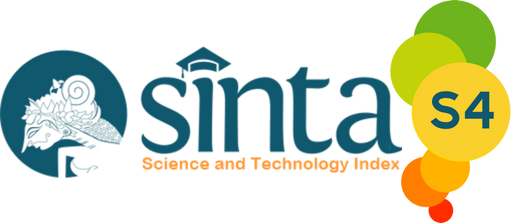PENGGUNAAN MODEL PEMBELAJARAN CHILDREN LEARNING IN SCIENCE (CLIS) DALAM PEMBELAJARAN IPA-FISIKA UNTUK MENINGKATKAN PENGUASAAN MATERI GLBB PESERTA DIDIK KELAS VIII DI SMP NEGERI 5 MALUKU TENGAH
Keywords:
CLIS Model, Material Mastery, GLBBAbstract
This study aims to determine the increase in students' mastery of material through the Chilledren Learning In Science (CLIS) learning model which is taught to class VIII students of SMP Negeri 5 Central Maluku on the subject of uniformly changing straight motion (GLBB). This type of research is a descriptive research type using one group pretest-posttest with a sample of class VIII1 as many as 18 students taken at random (random). The research instrument was in the form of tests and non-tests, the test instruments were in the form of pre tests and final tests, while the non test instruments were in the form of student worksheets (LKPD). The results of the study showed that in the initial test, 100% of students were in the failed qualification, with an average achievement score 30,10. The results of the analysis during the learning process took place using the CLIS learning model showing that the average student achievement score was 86.59, which is in very good qualifications. The average score of students' final test achievement reached77,24are in good qualification. For the N-Gain test results, it was obtained that the average score of students was 0.7, which was in high qualification. Thus, it was concluded that the use of the CLIS learning model could improve mastery of GLBB material.
References
Assagaf, G. (2016). Pengaruh kemandirian belajar dan regulasi diri terhadap hasil belajar matematika melalui motivasi berprestasi pada siswa kelas X SMA Negeri di Kota Ambon. Matematika dan Pembelajaran, 4(1), 23-32. Maro. 2015 : 7. kurikulum 2013 scientifie approach.
Ginanjar, A. A., Handoko, S., & Sukmana, R. W. (2019). Penerapan Model Pembelajaran Children Learning in Science (CLIS) untuk Meningkatkan Hasil Belajar Kognitif Peserta Didik pada Mata Pelajaran IPA. Educare, 132-137.
Dewi, i. G. A. A., suarjana, i. M., & riastini, p. N. (2014). Pengaruh model pembelajaran clis terhadap pemahaman konsep ipa. Undiksha, 2(1).
Ismail, A. (2015). Penerapan model pembelajaran children learning in science (CLIS) berbantuan multimedia untuk meningkatkan penguasaan konsep Fisika siswa SMA. Jurnal Petik, 1(1), 1925.
Novita, Fidya, Sri Irawati, dan Dewi Jumiarni. 2018. Peningkatan Aktivitas Dan Hasil Belajar Melalui Model Discovery Learning Dengan Pendekatan Saintifik. Diklabio: Jurnal Pendidikan dan Pembelajaran Biologi. Universitas Bengkulu.
Charli, Leo, Ahmad Amin & Desi Agustina. (2018). Kesulitan Siswa Dalam Menyelessaykan Soal Fisika Pada Materi Suhu Dan Kalor Di Kelas X SMA Ar-Risalah Lubuklinggau Tahun Pelajaran 2016/2017. JOEAI (Journal of Education and Instruction). STKIP-PGRI Lubuklinggau.
Trianto, S. (2011). Model-Model Pembelajaran Inovatif Berinovasi Konstruktivistik (Konsep, Landasan Teoritis–Praktis dan Implementasinya). Jakarta: Prestasi Pustaka.
Hidayat, M. (2011). Pembelajaran Berbasis Eksperimen Pada Konsep Untuk Pengembangan Sikap Ilmiah Siswa. Jurnal pendidikan, 2: 143
Astuti, S. P. (2015). Pengaruh kemampuan awal dan minat belajar terhadap prestasi belajar fisika. Formatif: Jurnal Ilmiah Pendidikan MIPA, 5(1).
Desi Indriyani, dkk (2019). Perbedaan Model Children's Learning In Science (Clis) Dan Model Scientific Terhadap Hasil Belajar Siswa Pada Pembelajaran Tematik. Jurnal basicedu, 3 (2), 627-633
Downloads
Published
Issue
Section
License

This work is licensed under a Creative Commons Attribution-NonCommercial-ShareAlike 4.0 International License.






